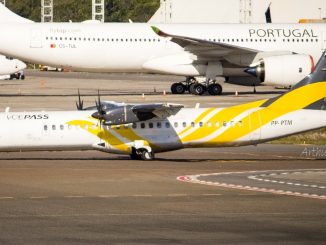
Embraer’s E175-E2 has successfully completed its first flight in São José dos Campos, Brazil, on Friday.
The maiden flight took of at 11:07 am local time and lasted for more than two hours. Embraer will now carry out tests for 24 months, using a total of three aircraft of this type, until it expects to receive a certification by authorities.
This latest regional jet from the Brazilian aircraft manufacturer is the third and smallest member of the ‘E2’ family. The E2 jets follow the first generation E-Jet family, which is among the most sold regional aircraft families. Embraer has equipped the second generation with modern Pratt & Whitney PW1700G engines, new wings and updated avionics, supposedly cutting fuel use by up to 16% compared to its predecessor, in this case the E175. Up to 90 passengers can fit into a single-class E175-E2, four more than in the previous generation. In a typical two-class layout, the smallest E2 plane would be configured with a total of 80 seats.
The E175-E2’s larger siblings, the E190-E2 and E195-E2, have already been delivered to customers and several airplanes of these types are in regular commercial service. Norwegian regional airline Widerøe became the launch costumer for the E190-E2 in April 2018, and Brazilian Azul was first to operate the E195-E2 – the inaugural aircraft of the longest E2 variant was delivered to the airline in September. Several other carriers have since also received E2 jets, further operators include Air Astana, Helvetic Airways and Binter Canarias.
Other than the 90 and 95 versions, the E175-E2 currently does not have any firm orders. An order for 100 aircraft, that was signed back in 2013 by US American regional operator SkyWest Airlines, was removed from Embraer’s backlog in 2018.

Jakob Wert is an aviation journalist from Germany. He built up the website IFN.news and is the Editor-In-Chief of International Flight Network.



